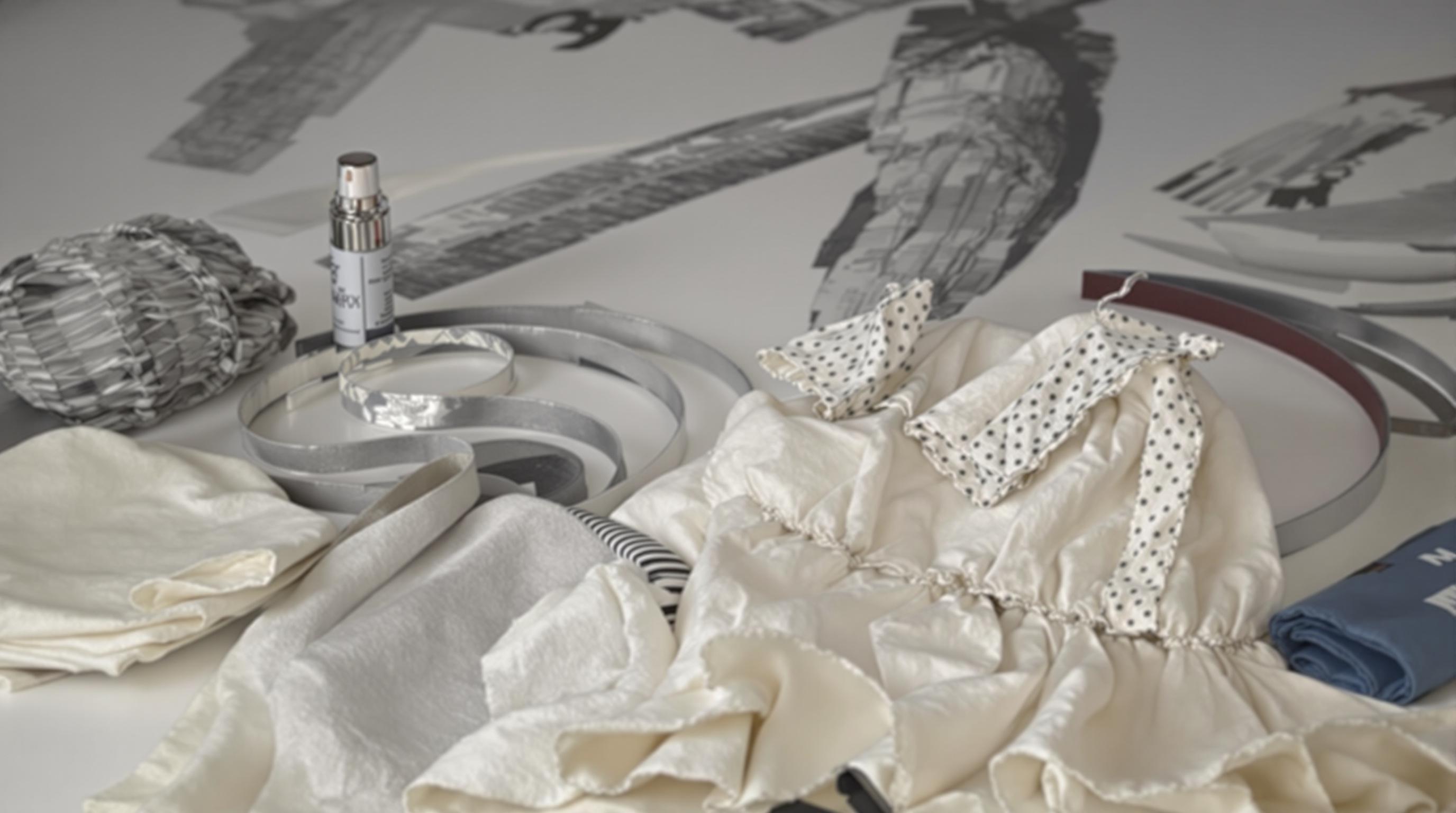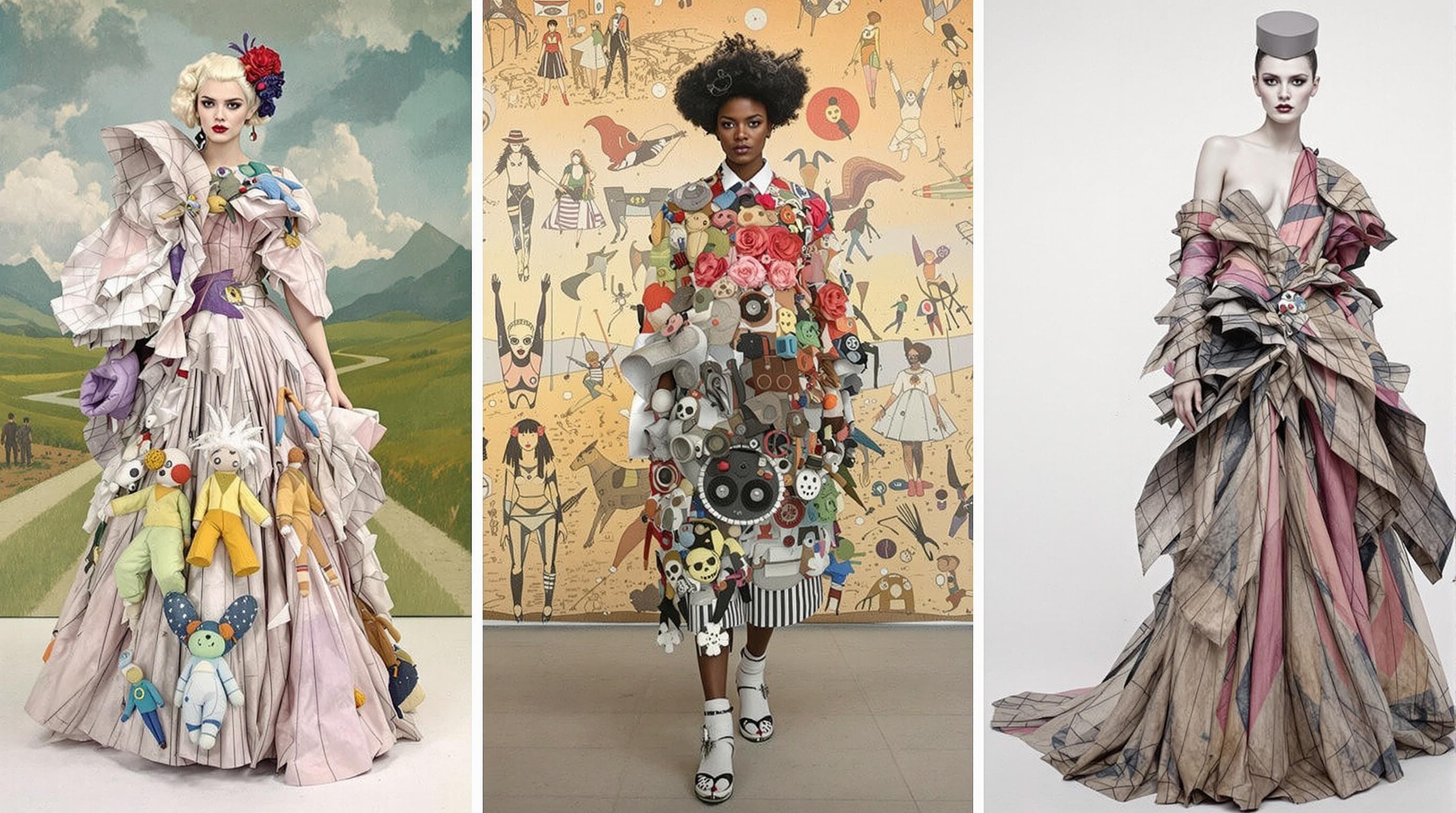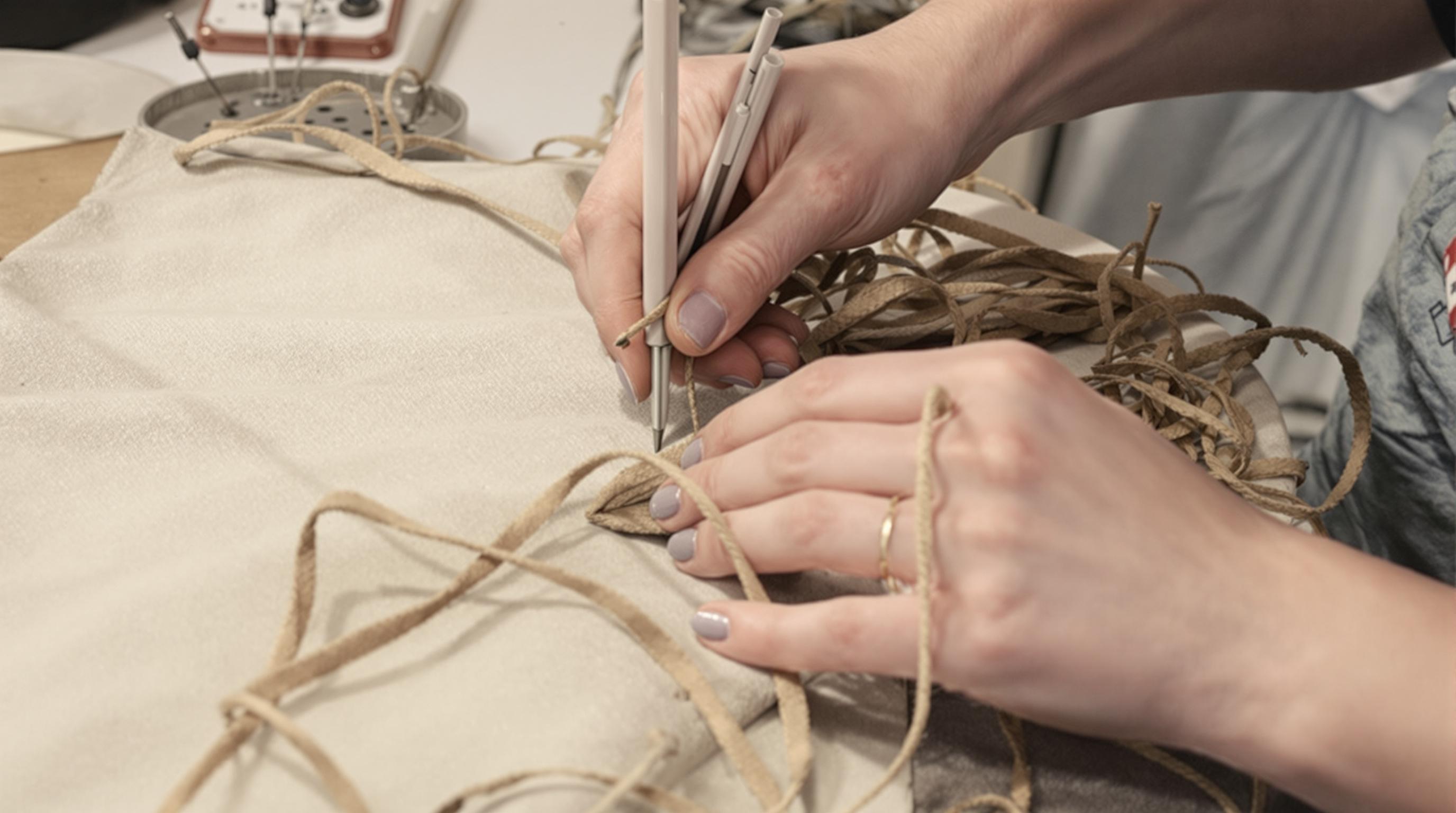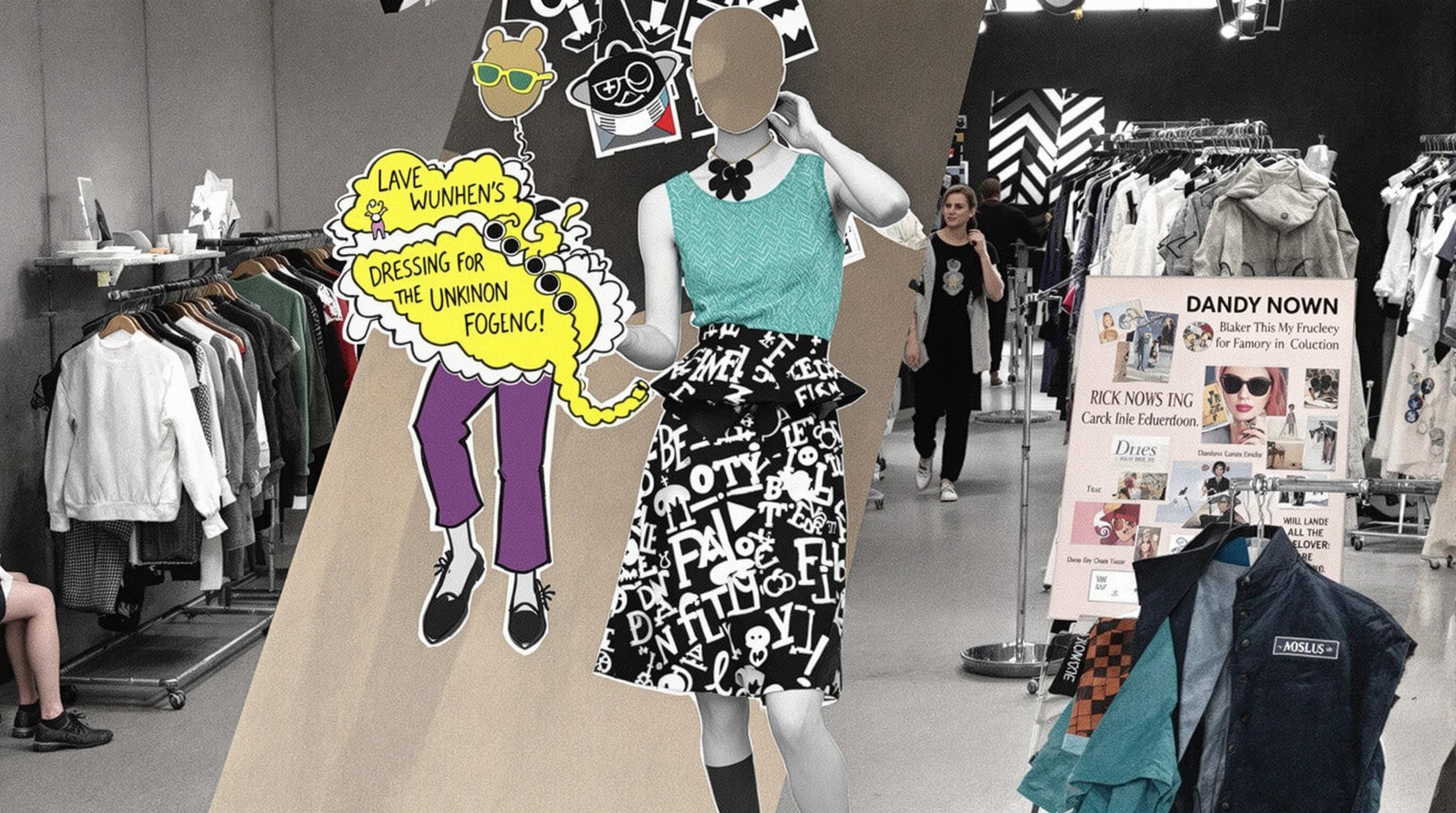Related Articles
- Fashion's Second Skin: The Underbelly of Wearable Tech and Its Surprising Roots in Previous Iconic Styles
- Shadows of Style: The Controversial Anti-Fashion Movements That Shook the Industry from Within
- Silent Statements: The Impact of Minimalism in Fashion's Most Overlooked Decades
- Distorted Reflections: The Role of AI in Shaping Fashion Perceptions and Consumer Trust in 2023
- Dressing the Future: How AI-Generated Designs Could Revolutionize Creativity and Profitability in Fashion
- The Art of Unfashion: How Anti-Fashion Movements are Reshaping Consumer Expectations and Market Strategies
Fabric Based Narratives: How Material Storytelling Reshapes the Fundamentals of Fashion Design
Fabric Based Narratives: How Material Storytelling Reshapes the Fundamentals of Fashion Design
Fabric-based narratives are revolutionizing fashion design by allowing creators to weave stories directly into their materials, changing the way garments are conceived and perceived. This article explores the role of storytelling in textiles, showcasing examples, statistics, and case studies that illustrate how material choices can shape fashion's future.
The Essence of Material Storytelling
Imagine wearing a piece of clothing that not only looks beautiful but also tells a story of resilience, culture, or innovation. Fabric-based narratives allow designers to infuse garments with deeper meanings, leading to a more personal connection between the wearer and the item.
The Rise of Ethical Fashion
In recent years, consumers have increasingly demanded transparency and sustainability from fashion brands. According to a McKinsey report, around 66% of global respondents consider a brand's sustainability policies when making a purchase. This shift toward conscious consumerism has prompted designers to seek materials with compelling stories—be it organic cotton grown by small-scale farmers or recycled plastics transformed into high-fashion pieces.
Case Study: Stella McCartney
Stella McCartney is a pioneer in sustainable fashion, using biodegradable fabrics and promoting cruelty-free practices. Her collections often tell the story of environmental preservation, attracting a dedicated customer base. For instance, her use of eucalyptus fibers in her recent line not only showcases innovation but also illustrates her commitment to sustainable sourcing. By connecting her designs with environmental narratives, McCartney elevates the conversation around fashion beyond mere aesthetics.
The Role of Cultural Narratives
Fashion is inherently tied to identity and culture. Designers like Dries Van Noten and Issey Miyake have explored cultural narratives through textile choices. Van Noten famously uses traditional fabrics and patterns from various cultures, blending them into contemporary silhouettes. This not only celebrates cultural heritage but also serves to educate consumers about the origins of their garments, transforming clothing from mere fabric into a tapestry of cultural storytelling.
Statistics that Speak Volumes
According to a 2022 survey conducted by the Ethical Fashion Forum, 80% of millennials are more likely to trust and purchase from brands that provide transparency about their material sourcing. This statistic underscores the importance of fabric-based narratives in achieving consumer trust, emphasizing that the stories behind materials can considerably influence purchasing decisions.
The Science of Materials
Let’s take a detour to the fascinating world of material science. From biodegradable fabrics to environmentally friendly dyes, advancements in textile technology have opened new realms of creativity for designers. A 2021 study published in the Journal of Cleaner Production noted that innovative materials like mycelium leather and algae-based textiles are gaining traction. These materials not only have lower environmental footprints but also come with rich narratives about their creation, appealing to eco-conscious consumers.
Storytelling Through Technique
It’s not just the fabric itself that tells a story; the techniques employed in creating garments add another layer to the narrative. Techniques such as indigo dying, quilting, or even digital printing not only document skills passed down through generations but also reflect the socio-economic journey of communities. For instance, quilts made by African American women in the Southern United States are more than decorative items; they're historical documents, filled with stories of struggle and triumph.
Humor in Narratives
Let’s not forget that storytelling in fashion can be humorous too! Some designers use irony or whimsy to engage with narratives. For instance, what if a collection is based on the idea of a “couch potato”? Garments made from soft, durable fabrics that define comfort could be marketed using whimsical illustrations of potatoes lounging. In this way, humor becomes a medium through which deeper societal narratives can be explored.
Material vs. Message
A common debate in the fashion industry revolves around whether material choices or the messages they convey are more important. While stunning designs can attract attention, it’s the stories behind them that create lasting connections. Fashion icon Karl Lagerfeld once said, “Fashion is a language that creates itself in clothes to interpret reality.” The key takeaway? The fabric you wear may speak volumes about who you are, the stories you believe in, and the world you want to shape.
Emerging Designers and New Narratives
Emerging designers are often at the vanguard of material storytelling, utilizing lesser-known fabrics or unique techniques to express their narratives. For instance, ACNE Studios has consistently pushed boundaries by experimenting with innovative textiles and cuts to create pieces that challenge traditional fashion norms. By looking to the past—a blend of nostalgia and future-forward thinking—they craft narratives that resonate with a diverse audience.
Collaborative Narratives
Fashion collaboratives represent a powerful force in the reshaping of narratives within the industry. Brands like The RealReal have fundamentally changed how consumers view second-hand fashion, tying narratives of sustainability to luxury. By sharing stories of previously loved items, they inspire new appreciation for garments and promote a circular economy in fashion.
Engaging the Youth
As an 18-year-old aspiring fashion designer, I can attest to how fabric-based narratives captivate my generation. We desire authenticity and relatability. For us, it’s not enough for a brand to simply produce; they must also resonate—whether through social justice, environmental advocacy, or cultural representation. When a garment tells a story, it transforms from a mere purchase into a movement.
The Future of Fashion and Material Storytelling
Looking ahead, the integration of technology and storytelling in textiles is limitless. Virtual reality (VR) and augmented reality (AR) are already being utilized by brands to share the stories behind their collections, creating immersive experiences for consumers. Imagine walking into a store where you can see and feel the journey of your garment from thread to finish! Innovations like these will undoubtedly reshape the future of fashion, making each purchase not just a transaction but a journey.
Summing It Up
In conclusion, fabric-based narratives work to reshape the fundamentals of fashion design by infusing garments with meaning and authenticity. From the textiles' origins to the stories behind the techniques, everything can blend into a cohesive narrative that speaks to the values of today's consumers. As we move forward, let's continue to champion fashion that tells stories—after all, fabric isn't just fabric; it’s a canvas for life’s many narratives.
The world of fashion is evolving, and those who embrace the stories within their materials will undoubtedly lead it into a more meaningful future. Remember, every garment has a tale to tell—make sure yours is worth hearing.




